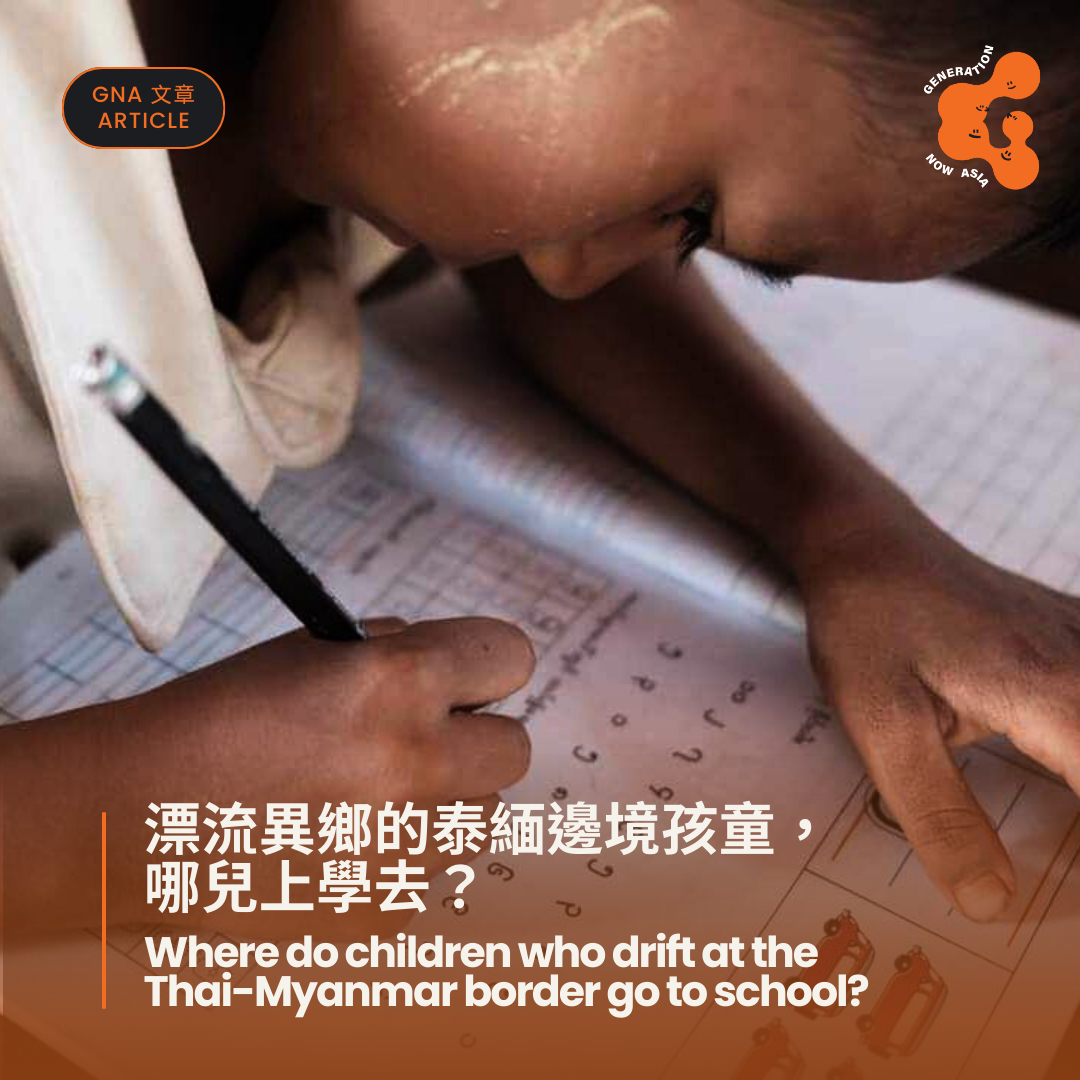Finding Hope in Chaos: Myanmar Entering its Fourth Year Post-Coup 【在混亂中找到希望:緬甸進入第4年的後政變時代】

by Kristina Kironska (March 8, 2024)
While the Myanmar military retains control over major cities like Yangon, Mandalay, and Naypyidaw, its authority in Myanmar’s peripheral territories, especially in the north, is questionable at best. Years following the failed military coup, there emerges hope for the democratic resistance. By the conclusion of 2023 and the onset of 2024, Myanmar reached a turning point, witnessing notable victories by the resistance movement, particularly on the battlefield. For the first time since the coup, there's a mounting likelihood that the revolutionary movement could overcome the military dictatorship.
Three years after the coup, Myanmar faces a severe humanitarian crisis, with countless people displaced and thousands losing their lives. The military's actions have led to widespread suffering, with numerous individuals imprisoned and families torn apart. While the struggle in Myanmar is tragic, it also holds inspiration as the nation – previously deeply divided among various ethnic groups – has unified against the military, which seized power illegally on February 1, 2021. Likely driven by a combination of the military's significant electoral defeat in the 2020 elections (in the form of a party close to the military, formed by former generals) and personal aspirations of the Commander-in-Chief, the military arrested most of the civilian leadership in the country and halted all democratic processes. Initially facing daunting odds, the people of Myanmar have persisted, and now, years later, we witness a gradual shift in the balance of power in their favour.
In the aftermath of the coup, the prospect of defeating the junta seemed bleak, with the military prepared to violently suppress initially non-violent protests, which eventually escalated into armed defense. For the first two years, the resistance movement struggled to survive, as the military had a significant advantage over them. The struggle eventually reached a tipping point in the third year where the military could not crush the resistance, yet the resistance couldn't overthrow the military. By the end of the year 2023, a significant shift occurred in this situation. Operation 1027, named after its start date on October 27, 2023, marked a pivotal moment, and for the first time, it seems as though the revolutionary forces may eventually achieve victory.
However, the ultimate success of the resistance movement against the junta hinges on various factors, internal and external ones. Crucial external factors include the actions of the country's neighbours, notably China, which has long been deeply involved in Myanmar's affairs and played a pivotal role also in the above-mentioned Operation 1027.
China essentially gave the green light to the operation as it offered a solution to a longstanding issue it needed to solve. For months, the Chinese central government had urged the Myanmar military junta to clamp down on cross-border cyber scam syndicates, mainly run by Chinese criminals from compounds on the Myanmar side of the border, under the protection of local warlords. Despite China's appeals, the junta did not respond. Instead, a different actor emerged and provided the long sought-after solution. In October 2023, the Three Brotherhood Alliance, consisting of three ethnic armed organisations joined by the people's defense forces (armed units formed post-coup to fight the military regime and recognised by the National Unity Government, the parallel government constituted by representatives elected in the 2020 elections), launched an operation with a dual objective: to eliminate the scam syndicates operating in the region and to confront and to defeat the military dictatorship. For China, in the short term, prioritising the crackdown on scam centers overshadowed peace efforts along the border. Publicly, China advocated for de-escalating the conflict.
The ensuing battles resulted in the liberation of numerous compounds, with enslaved individuals (predominantly Chinese nationals); and led to unprecedented battlefield losses for the Myanmar military, highlighting the effectiveness and impact of the operation. Operation 1027, which is still ongoing, has emerged as the most significant threat to the military regime since the coup. The alliance has successfully blocked the junta's access to the northern part of Shan State, seized key cities and towns in the region, and control of the Myanmar-China border, thereby disrupting the lucrative border trade (which previously funneled cash into the junta's hands). Throughout these developments, China mediated talks between the military and the alliance, primarily aiming to prevent prolonged disruptions of border trade. The latest round of talks occurred in early March in the Chinese city of Kunming. The ceasefires negotiated thus far have been tenuous, with several instances of breakdowns.
Operation 1027 was made possible by the broader resistance movement in Myanmar, as the junta had faced a national uprising in numerous parts of the country. This further strained the junta's already thinning forces. In turn, Operation 1027 not only capitalised on this weakening of the junta but also significantly bolstered the revolutionary forces in other parts of Myanmar. The revolutionary forces in these other areas intensified their efforts and began to occupy military bases. Consequently, the army suffered losses as several bases fell, and many soldiers were imprisoned.
As fierce battles between the military and the resistance movement persist, one thing is certain: there's no turning back. Currently, everything in Myanmar revolves around the ousting of the oppressive junta and, on a broader scale, eradicating the military's influence from the country's political landscape. A return to a compromise scenario resembling the hybrid regime of the 2010s (with the military wielding significant political power alongside the civilian government), is not a viable solution. While the people of Myanmar believe victory is within reach, it remains uncertain how long this process will take – real change in Myanmar could be years away. Nonetheless, with the recent developments, we can now view this situation through a lens of hope.
KRISTINA KIRONSKA is an Assistant Professor at the Palacky University in Olomouc, where she coordinates the EU-funded project "The EU in the volatile Indo-Pacific" (EUVIP). Simultaneously, she serves as the Advocacy Director at the think-tank Central European Institute of Asian Studies (CEIAS). She is the author of the Myanmar Coup Tracker, an online tool that maps key events following the coup in Myanmar. She tweets at @KristinaKi6
在混亂中找到希望:緬甸進入第4年的後政變時代
作者:Kristina Kironska (2024年3月8日)
雖然緬甸軍方仍然控制著主要城市,如仰光、曼德勒和內比都,但對邊陲地區的控制開始出現問題,尤其是北部地區。
民主抵抗行動在軍方政變幾年後接連面對失敗,然而在 2023年底和2024年初出現轉折點,開始在戰場上取得顯著勝利。自政變以來,首次出現了革命運動有可能戰勝軍事獨裁政權的局面。
政變 3 年後,緬甸面臨嚴重的人道危機,無數人民被迫流離失所,數千人喪生。軍方的行動導致大規模的苦難,許多人被囚禁,許多家庭被拆散。雖然緬甸的衝突充滿悲劇,但也促使曾因民族歧見而陷入嚴重分裂的緬甸人民,更加團結反對軍方。
緬甸軍方所屬政黨於 2020年選舉面臨重大失敗後(該政黨由前將軍所組成,與軍方密切相關),軍方總司令個人意志便驅使軍方於2021年2月1日發動政變,非法奪取政權,並逮捕許多民選領導人,停止所有民主程序。
政變初期,緬甸人民面臨艱鉅的挑戰,然而他們持續堅持至今。幾年後,我們看到了局勢逐漸開始朝著他們有利的方向轉變。
政變後初期,軍方對非暴力抗議進行暴力鎮壓,擊敗軍政府的目標似乎渺無希望,後來這些抗議演變成武裝防禦。
在前兩年裡,軍方在實力上佔據了明顯優勢,抵抗運動只能努力求生存。最終在第 3 年達到了關鍵點,軍方無法粉碎抵抗,但抵抗力量也無法推翻軍方。
到了2023年年底,這種相互對峙的情況出現重大變化。1027行動標誌著一個轉折點,此行動以其於2023年10月27日開始而命名。這是第一次看來,革命力量可能最終會獲勝。
然而,對抗軍政府的抵抗運動最終能否成功取決於各種原因,包括內部和外部因素。關鍵的外部因素包含鄰國的行動,特別是長期以來一直深度介入緬甸事務的中國,也在上述提到的1027行動中發揮了關鍵作用。
中國對1027行動表示支持,因為此行動幫助中國解決一個長期問題。
數月來,中國政府一直敦促緬甸軍政府打擊跨境網路詐騙集團,這些集團主要由中國罪犯在緬甸邊境的民族武裝組織保護下運營,但緬甸軍政府未給予回應。
2023年10月,由三個民族武裝組織和人民防衛部隊組成的三兄弟聯盟(Three Brotherhood Alliance)發起行動,雙重目標是消滅該地區的詐騙集團,並對抗和打敗軍事獨裁政權(dual objective)。中國公開主張緩和衝突,對中國來說,短期內優先打擊詐騙集團比邊境地區的和平更重要。
註: 人民防衛部隊是在政變後成立的武裝單位,目標在與軍政府對抗,並獲得政變期間 NUG 平行政府的承認(National Unity Government, 簡稱 NUG, 由2020年人民選出的代表所組成)
1027行動帶來多面向的影響,其中包含解救許多被奴役的人民(主要是中國公民),並導致緬甸軍隊在戰場上遭受了前所未有的損失。
仍在進行中的1027行動已成為政變以來對軍政府最重大的威脅。三兄弟聯盟成功阻止了軍政府進入控制北部掸邦的通道,奪取了該地區的主要城鎮,控制了中緬邊境(control of the Myanmar-China border),並破壞了對軍政府有利可圖的邊境貿易(此前資金流入軍政府的手中)。
接著,中國為了避免長期中斷邊境貿易,便介入緬甸軍政府與三兄弟聯盟之間的調解談判。最近一輪談判在三月初的中國昆明市 (occurred in early March in the Chinese city of Kunming)。迄今為止,談判達成的停火協議都很脆弱,並多次出現談判破裂局面。
因為緬甸大規模的抵抗運動,軍政府在全國多地區面臨抗爭,削弱了已經不堪負荷的軍力,1027行動才得以帶來成效。
此外,1027行動更加激勵緬甸其他地區的革命行動(bolstered the revolutionary forces in other parts of Myanma)。各地區的抵抗力量加大力道,開始佔據軍事基地。結果,軍政府的軍隊遭受損失,幾個基地被攻陷,許多士兵被囚禁。
軍政府和抵抗運動之間的激烈戰爭持續進行著,有一件事是肯定的:已經沒有回頭路了。
目前,緬甸的主要衝突目標就是推翻獨裁軍政府。大方向來看,因為回到類似於2010年代的混合政權局面(軍方與民選政府共同擁有重要政治權力)不是一個可行的解決方案,所以希望在政局中大力消除軍方的影響。
雖然緬甸人民相信勝利就在眼前,但緬甸局勢的真正改變可能還需要幾年,目前這個過程需要多少時間仍然不確定。儘管如此,近期發展的局勢讓我們可以從「希望」的角度來看待這個情況。
KRISTINA KIRONSKA是奧洛穆茨的帕拉茨基大學(Palacky University)助理教授,她負責協調歐盟資助的項目「不穩定的印度-太平洋地區中的歐盟」(EUVIP)。同時,她擔任中歐亞洲研究所(Central European Institute of Asian Studies,CEIAS)的倡議主任。她是《緬甸政變追蹤器Myanmar Coup Tracker》的作者,這是一個在緬甸政變後追蹤關鍵事件的在線工具。她在Twitter上的用戶名是@KristinaKi6



